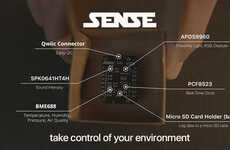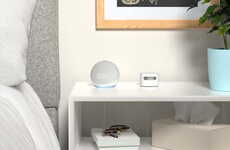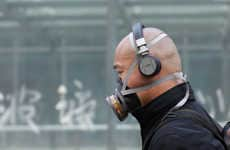
This Phone Sensor Uses Light to Identify Gases in Air Samples
Rahul Kalvapalle — August 18, 2015 — Eco
References: vttresearch & gizmag
A group of researchers at the VIT Technical Research Centre in Finland have developed a miniature phone sensor that is capable of using light to identify the type amount of various kinds of gases in air samples.
The phone sensor works by shining light of various wavelengths. Different gases absorb wavelengths at known rates, making it possible to ascertain the properties of present gases.
While we're already quite familiar with the workings of smartphones that are able to monitor things like light, sound, movement and geographical location, the use of smartphones to monitor airborne gases sounds like something out of science fiction -- but the technology is on its way to being realized, at which time it is sure to generate all kinds of commercial interest.
The phone sensor works by shining light of various wavelengths. Different gases absorb wavelengths at known rates, making it possible to ascertain the properties of present gases.
While we're already quite familiar with the workings of smartphones that are able to monitor things like light, sound, movement and geographical location, the use of smartphones to monitor airborne gases sounds like something out of science fiction -- but the technology is on its way to being realized, at which time it is sure to generate all kinds of commercial interest.
Trend Themes
1. Gas-monitoring Sensors - The development of miniature phone sensors is unlocking the potential for gas monitoring in a range of industries.
2. Smartphone Sensors - As smartphones continue to integrate increasingly advanced sensors, the possibilities for innovative sensor applications in various industries is rapidly on the rise.
3. Optical Gas Analysis - Using light waves to analyze gases represents a disruptive innovation in gas sensing technology with potential applications across a range of industries.
Industry Implications
1. Environmental Monitoring - Gas-monitoring sensors have the potential to revolutionize air quality monitoring and environmental analysis in industries such as manufacturing, energy, and transportation.
2. Healthcare - From detecting toxic gases to monitoring respiratory illnesses, gas-sensing smartphone technology could have a significant impact on healthcare and biosciences industries.
3. Safety and Security - Smartphone gas-monitoring sensors could be applied in various settings to ensure worker safety in hazardous environments and contribute to the detection and prevention of gas leaks.
4
Score
Popularity
Activity
Freshness























